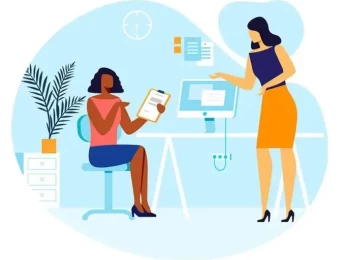- Table of Contents
- Introduction
- Why is Quality Assurance Training Essential?
- 1. Ensuring Product and Service Quality
- 2. Compliance with Standards and Regulations
- 3. Reducing Errors and Defects
- 4. Enhancing Efficiency and Productivity
- 5. Fostering a Culture of Continuous Improvement
- 6. Improving Customer Satisfaction and Retention
- 7. Strengthening Risk Management
- 8. Supporting Employee Development and Engagement
- 9. Enabling Adaptation to Market Changes
- 10. Facilitating Cross-Functional Collaboration
- What are the Key Components of Quality Assurance Training Programs?
- 1. Introduction to Quality Assurance
- 2. Quality Standards and Regulations
- 3. Quality Management Systems (QMS)
- 4. Process Management and Improvement
- 5. Quality Auditing
- 6. Statistical Quality Control (SQC)
- 7. Risk Management
- 8. Problem-Solving and Root Cause Analysis
- 9. Customer Focus and Satisfaction
- 10. Quality Tools and Techniques
- 11. Training and Competence Development
- 12. Continuous Improvement and Innovation
- 13. Documentation and Record Keeping
- What Are the Best Practices for Implementing Quality Assurance Training?
- 1. Conduct a Needs Assessment
- 2. Develop a Comprehensive Training Plan
- 3. Engage Qualified Trainers
- 4. Incorporate Various Training Methods
- 5. Customize Training Programs
- 6. Utilize Technology
- 7. Emphasize Practical Application
- 8. Foster a Quality Culture
- 9. Monitor and Evaluate Training Effectiveness
- 10. Provide Ongoing Support and Refresher Training
- 11. Document and Standardize Procedures
- 12. Promote Continuous Improvement
- 13. Align Training with Organizational Goals
- What Are the Common Challenges in Quality Assurance Training and How to Overcome Them?
- 1. Resistance to Change
- 2. Limited Resources
- 3. Lack of Customization
- 4. Inadequate Training Methods
- 5. Difficulty in Measuring Training Effectiveness
- 6. Ensuring Continuous Improvement
- 7. Balancing Training with Work Responsibilities
- 8. Lack of Follow-Up
- What Are the Future Trends in Quality Assurance Training?
- 1. Integration of Advanced Technologies
- 2. Emphasis on Data Analytics
- 3. Virtual and Augmented Reality (VR/AR)
- 4. Personalized Learning Paths
- 5. Increased Focus on Soft Skills
- 6. Enhanced Regulatory and Compliance Training
- 7. Blended Learning Models
- 8. Continuous Learning and Development
- 9. Remote and Distributed Training
- 10. Sustainability and Environmental Focus
Introduction
Quality Assurance (QA) training is essential because it equips employees with the skills and knowledge to ensure that products and services meet high standards of quality. This training is crucial for maintaining customer satisfaction, complying with industry regulations, and minimizing errors and defects. By fostering a culture of continuous improvement, QA training enhances efficiency and productivity, reduces operational costs, and mitigates risks. Ultimately, it helps organizations remain competitive, innovative, and capable of consistently delivering excellence in their offerings.
Why is Quality Assurance Training Essential?
Quality Assurance (QA) training is essential for several reasons, all of which contribute to the overall success and sustainability of an organization. Here's a detailed exploration of its importance:
1. Ensuring Product and Service Quality
QA training equips employees with the knowledge and skills necessary to consistently produce high-quality products and services. This ensures that the organization's offerings meet or exceed customer expectations, leading to higher customer satisfaction and loyalty.
2. Compliance with Standards and Regulations
Many industries are governed by strict standards and regulatory requirements. QA training ensures that employees understand and comply with these regulations, helping the organization avoid legal issues, fines, and damage to its reputation.
3. Reducing Errors and Defects
Well-trained employees are less likely to make errors or produce defective products. QA training emphasizes the importance of attention to detail, thorough testing, and adherence to established procedures, which collectively minimize the risk of errors and defects.
4. Enhancing Efficiency and Productivity
By teaching best practices and efficient processes, QA training helps employees work more effectively. This leads to increased productivity, reduced waste, and optimized use of resources, ultimately lowering operational costs.
5. Fostering a Culture of Continuous Improvement
QA training instills a mindset of continuous improvement in employees. It encourages them to constantly seek ways to enhance processes, products, and services, fostering innovation and keeping the organization competitive in the market.
6. Improving Customer Satisfaction and Retention
High-quality products and services result in satisfied customers. QA training helps ensure that every customer interaction is positive, leading to repeat business, positive reviews, and strong brand loyalty.
7. Strengthening Risk Management
QA training helps employees identify potential risks and implement preventive measures. This proactive approach to risk management reduces the likelihood of issues that could disrupt operations or harm the company's reputation.
8. Supporting Employee Development and Engagement
Investing in QA training demonstrates that the organization values its employees and is committed to their professional growth. This can lead to higher employee engagement, motivation, and retention, as employees feel more competent and confident in their roles.
9. Enabling Adaptation to Market Changes
QA training keeps employees up-to-date with the latest industry trends, technologies, and methodologies. This knowledge enables the organization to quickly adapt to market changes and maintain its competitive edge.
10. Facilitating Cross-Functional Collaboration
QA training often involves cross-functional teams, promoting better communication and collaboration across departments. This leads to a more cohesive and efficient organization, where everyone works together towards common quality goals.
In summary, QA training is essential because it not only ensures high standards of quality and compliance but also drives efficiency, innovation, and customer satisfaction. It is a foundational element that supports the long-term success and excellence of an organization.
What are the Key Components of Quality Assurance Training Programs?
Quality Assurance (QA) training programs are designed to equip employees with the skills and knowledge necessary to ensure that products and services meet established standards of quality. The key components of these training programs typically include the following elements:
1. Introduction to Quality Assurance
- Definition and Importance: Explanation of what QA is and why it is crucial for the organization.
- History and Evolution: Overview of the development of QA practices over time.
- Quality Principles: Fundamental principles and philosophies underlying QA, such as Total Quality Management (TQM), Six Sigma, and Lean.
2. Quality Standards and Regulations
- Industry Standards: Detailed overview of relevant industry-specific standards (e.g., ISO 9001, FDA regulations).
- Compliance Requirements: Understanding legal and regulatory requirements that must be met.
- Certification Processes: Steps and procedures for achieving and maintaining certifications.
3. Quality Management Systems (QMS)
- Components of QMS: Key elements like quality policies, procedures, and documentation.
- Implementation and Maintenance: How to establish and sustain an effective QMS.
- Continuous Improvement: Strategies for ongoing enhancement of the QMS.
4. Process Management and Improvement
- Process Mapping and Analysis: Techniques for documenting and analyzing processes.
- Process Control: Methods for maintaining and controlling process quality.
- Process Improvement Tools: Use of tools like PDCA (Plan-Do-Check-Act), root cause analysis, and process reengineering.
5. Quality Auditing
- Types of Audits: Internal, external, system, product, and process audits.
- Audit Planning and Execution: Steps for preparing, conducting, and reporting audits.
- Audit Follow-Up: Corrective actions and monitoring for audit findings.
6. Statistical Quality Control (SQC)
- Data Collection and Analysis: Methods for gathering and interpreting quality data.
- Control Charts: Use of control charts to monitor process variation.
- Sampling Techniques: Principles of statistical sampling in quality control.
7. Risk Management
- Risk Identification: Techniques for identifying potential quality risks.
- Risk Assessment: Assessing the probability and consequences of recognized risks.
- Risk Mitigation: Strategies for minimizing or eliminating risks.
8. Problem-Solving and Root Cause Analysis
- Problem-Solving Techniques: Structured approaches like the 8D method, Five Whys, and Fishbone Diagrams.
- Corrective and Preventive Actions (CAPA): Procedures for addressing and preventing quality issues.
9. Customer Focus and Satisfaction
- Customer Requirements: Understanding and translating customer needs into quality specifications.
- Customer Feedback: Collecting and analyzing customer feedback for continuous improvement.
- Customer Relationship Management (CRM): Strategies for managing and enhancing customer relationships.
10. Quality Tools and Techniques
- Basic Quality Tools: Tools such as flowcharts, checklists, histograms, Pareto charts, and scatter diagrams.
- Advanced Quality Techniques: Techniques like Failure Mode and Effects Analysis (FMEA), Design of Experiments (DOE), and Quality Function Deployment (QFD).
11. Training and Competence Development
- Skills Assessment: Identifying skill gaps and training needs.
- Training Methods: Various approaches to training, such as classroom instruction, e-learning, workshops, and on-the-job training.
- Competence Evaluation: Assessing the effectiveness of training and ensuring that employees are competent in their roles.
12. Continuous Improvement and Innovation
- Continuous Improvement Culture: Fostering a culture that encourages ongoing quality enhancement.
- Innovation in QA: Incorporating new technologies and methodologies to improve quality processes.
13. Documentation and Record Keeping
- Quality Records: Importance of maintaining accurate and detailed records.
- Document Control: Procedures for managing quality documents and ensuring they are up-to-date.
Table 1:Key components of Quality Assurance training programs
Key Components | Description |
1. Introduction to Quality Assurance | Explanation of QA's significance, its evolution, and fundamental principles like TQM and Six Sigma. |
2. Quality Standards and Regulations | Overview of industry-specific standards (e.g., ISO 9001) and compliance requirements. |
3. Quality Management Systems (QMS) | Understanding QMS components, implementation, and strategies for continuous improvement. |
4. Process Management and Improvement | Techniques for process documentation, control, and improvement such as PDCA and root cause analysis. |
5. Quality Auditing | Types of audits (internal, external), audit planning, execution, and follow-up procedures. |
6. Statistical Quality Control (SQC) | Methods for data collection, analysis, control charts, and statistical sampling principles. |
7. Risk Management | Techniques to identify, assess, and mitigate quality risks, ensuring proactive risk management. |
8. Problem-Solving and Root Cause Analysis | Structured problem-solving methods like 8D, Five Whys, and CAPA for addressing quality issues. |
9. Customer Focus and Satisfaction | Understanding customer needs, feedback analysis, and CRM strategies to enhance satisfaction. |
10. Quality Tools and Techniques | Utilization of basic (flowcharts, checklists) and advanced (FMEA, DOE) quality improvement tools. |
11. Training and Competence Development | Assessment of training needs, various training methods, and competency evaluation techniques. |
12. Continuous Improvement and Innovation | Fostering a culture of continuous improvement and integrating innovative practices into QA. |
13. Documentation and Record Keeping | Importance of maintaining accurate records, document control procedures, and record management. |
By integrating these key components, QA training programs can provide a comprehensive framework that prepares employees to uphold and enhance the quality standards within their organization.
What Are the Best Practices for Implementing Quality Assurance Training?
Implementing effective Quality Assurance (QA) training requires a strategic approach that encompasses planning, execution, and continuous improvement. Here are the best practices for implementing QA training:
1. Conduct a Needs Assessment
- Identify Training Needs: Analyze the current QA skills and knowledge gaps within the organization.
- Set Clear Objectives: Define what the training aims to achieve, such as compliance with standards, reduction in defects, or improved customer satisfaction.
2. Develop a Comprehensive Training Plan
- Curriculum Design: Create a detailed curriculum that covers all key components of QA, tailored to the specific needs of the organization.
- Training Materials: Develop high-quality training materials, including manuals, videos, presentations, and hands-on activities.
3. Engage Qualified Trainers
- Experienced Instructors: Use trainers with extensive experience and expertise in QA.
- Continuous Professional Development: Ensure trainers are up-to-date with the latest QA trends, tools, and regulations.
4. Incorporate Various Training Methods
- Blended Learning: Combine classroom training, e-learning, workshops, and on-the-job training to accommodate different learning styles.
- Interactive Sessions: Use interactive techniques such as group discussions, role-playing, and simulations to enhance engagement and retention.
5. Customize Training Programs
- Tailored Content: Adapt the training content to fit the specific processes, products, and regulatory requirements of the organization.
- Industry-Specific Training: Include examples and case studies relevant to the industry to make the training more relatable and applicable.
6. Utilize Technology
- Learning Management Systems (LMS): Implement an LMS to manage and track training activities, progress, and outcomes.
- Virtual Training: Use webinars, virtual classrooms, and online resources to provide flexible and accessible training options.
7. Emphasize Practical Application
- Hands-On Training: Provide opportunities for employees to apply QA principles and techniques in real-world scenarios.
- Problem-Solving Exercises: Include exercises that involve solving actual QA issues faced by the organization.
8. Foster a Quality Culture
- Management Support: Ensure that leadership demonstrates commitment to QA and actively participates in the training.
- Employee Involvement: Encourage all employees to take ownership of quality and actively contribute to QA initiatives.
9. Monitor and Evaluate Training Effectiveness
- Feedback Mechanisms: Collect feedback from participants to gauge their satisfaction and the perceived value of the training.
- Performance Metrics: Measure the impact of training on key performance indicators such as defect rates, compliance incidents, and customer complaints.
10. Provide Ongoing Support and Refresher Training
- Continuous Learning: Offer regular refresher courses and advanced training sessions to reinforce and expand QA knowledge.
- Support Resources: Provide access to QA resources, tools, and support networks to help employees apply what they have learned.
11. Document and Standardize Procedures
- Standard Operating Procedures (SOPs): Develop and maintain SOPs for QA processes and ensure they are easily accessible.
- Training Records: Keep detailed records of training activities, including attendance, assessments, and certifications.
12. Promote Continuous Improvement
- Feedback Loop: Use feedback and evaluation results to continuously improve the training program.
- Benchmarking: Compare the training program against industry standards and best practices to identify areas for enhancement.
13. Align Training with Organizational Goals
- Strategic Alignment: Ensure that QA training supports the organization’s overall goals and objectives, such as increasing market share or improving product innovation.
- Integrated Approach: Integrate QA training with other organizational training programs, such as safety and regulatory compliance training, to create a cohesive learning experience.
By following these best practices, organizations can implement QA training programs that are effective, sustainable, and aligned with their quality objectives.
What Are the Common Challenges in Quality Assurance Training and How to Overcome Them?
Quality Assurance (QA) training is essential for maintaining high standards, but it can face several challenges. Overcoming these challenges requires a strategic approach. Here’re some common challenges and strategies to address them:
1. Resistance to Change
- Challenge: Employees may resist new QA processes or methodologies, especially if they have been using different approaches for a long time.
- Solution:
- Communicate Benefits: Clearly explain the advantages of the new QA practices, including how they will make work easier and improve outcomes.
- Engage Employees Early: Involve employees in the planning and implementation phases to gain their input and buy-in.
- Leadership Support: Ensure that management visibly supports and participates in the training.
2. Limited Resources
- Challenge: Organizations may have limited budget, time, or personnel to devote to QA training.
- Solution:
- Prioritize Training Needs: Focus on the most critical areas that will have the greatest impact on quality.
- Leverage Technology: Use e-learning, webinars, and other cost-effective training methods.
- Seek External Support: Consider hiring external experts or consultants for specialized training.
3. Lack of Customization
- Challenge: Generic training programs may not address the specific needs and challenges of the organization.
- Solution:
- Tailor Training Content: Customize training materials to reflect the specific processes, products, and regulatory requirements of the organization.
- Use Real-Life Examples: Incorporate case studies and examples relevant to the organization’s industry and operations.
4. Inadequate Training Methods
- Challenge: Traditional training methods may not be engaging or effective for all learners.
- Solution:
- Interactive Learning: Incorporate interactive elements such as simulations, hands-on activities, and group discussions.
- Blended Learning: Combine various training formats (e.g., online, in-person, on-the-job) to cater to different learning styles.
- Continuous Improvement: Regularly update training materials and methods based on feedback and new developments in the field.
5. Difficulty in Measuring Training Effectiveness
- Challenge: It can be hard to assess whether the training has effectively improved QA skills and knowledge.
- Solution:
- Set Clear Objectives: Define specific, measurable goals for the training program.
- Assessments and Feedback: Use pre- and post-training assessments, surveys, and feedback forms to evaluate learning outcomes.
- Performance Metrics: Track key performance indicators (KPIs) such as defect rates, compliance incidents, and customer complaints before and after training.
6. Ensuring Continuous Improvement
- Challenge: Maintaining ongoing improvement in QA practices can be difficult without regular updates to training programs.
- Solution:
- Regular Refresher Courses: Provide periodic refresher training to keep skills and knowledge up to date.
- Feedback Loop: Implement a system for continuous feedback and improvement, incorporating suggestions from trainees.
- Stay Updated: Keep abreast of industry trends, technological advancements, and regulatory changes to update training content accordingly.
7. Balancing Training with Work Responsibilities
- Challenge: Employees may struggle to balance training requirements with their regular job duties.
- Solution:
- Flexible Scheduling: Offer training sessions at different times and formats to accommodate various schedules.
- On-the-Job Training: Integrate training into daily work activities to make learning more relevant and less disruptive.
- Manager Support: Ensure that managers understand the importance of training and allocate time for their team members to participate.
8. Lack of Follow-Up
- Challenge: Training may not be effective if there is no follow-up to reinforce and apply what was learned.
- Solution:
- Post-Training Support: Provide resources and support for employees to apply their new skills on the job.
- Mentoring and Coaching: Pair trainees with experienced mentors or coaches to guide them in implementing QA practices.
- Regular Check-Ins: Conduct follow-up sessions to review progress, address challenges, and reinforce learning.
By addressing these challenges proactively, organizations can implement more effective and sustainable QA training programs that lead to improved quality outcomes.
What Are the Future Trends in Quality Assurance Training?
The field of Quality Assurance (QA) is continuously evolving, influenced by technological advancements, changing industry standards, and emerging methodologies. Here are some key future trends in QA training:
1. Integration of Advanced Technologies
- Artificial Intelligence (AI) and Machine Learning (ML): These technologies are being used to predict quality issues, automate testing processes, and analyze large datasets for quality insights. QA training will increasingly incorporate AI and ML tools and techniques.
- Internet of Things (IoT): IoT devices provide real-time data that can be used for continuous quality monitoring and improvement. Training will focus on how to leverage IoT for QA processes.
- Blockchain: Blockchain technology ensures traceability and transparency in the supply chain. QA training will include modules on blockchain applications in quality assurance.
2. Emphasis on Data Analytics
- Big Data Analytics: Using big data to identify trends, patterns, and root causes of quality issues is becoming more prevalent. Training will emphasize data analysis skills and the use of advanced analytics tools.
- Predictive Analytics: Training will cover predictive models that anticipate quality issues before they occur, enabling proactive measures.
3. Virtual and Augmented Reality (VR/AR)
- Immersive Training Experiences: VR and AR provide immersive training environments where employees can simulate QA scenarios and practice skills in a risk-free setting.
- Remote Inspections and Audits: AR can facilitate remote inspections and audits, making training in these technologies increasingly important.
4. Personalized Learning Paths
- Adaptive Learning Technologies: These systems adjust the training content based on the learner's progress and knowledge gaps, providing a customized training experience.
- Microlearning: Short, focused learning modules that employees can access on-demand will become more common, allowing for continuous learning without disrupting daily tasks.
5. Increased Focus on Soft Skills
- Collaboration and Communication: Effective QA requires strong teamwork and communication skills. Future training will place greater emphasis on developing these soft skills.
- Problem-Solving and Critical Thinking: Training will focus more on enhancing employees' ability to analyze situations, identify root causes, and implement effective solutions.
6. Enhanced Regulatory and Compliance Training
- Global Standards and Regulations: As industries become more global, training will cover a broader range of international standards and regulatory requirements.
- Ethical and Sustainable Practices: There will be a growing emphasis on training for ethical considerations and sustainable practices in QA.
7. Blended Learning Models
- Combination of Online and In-Person Training: Blended learning models that combine e-learning with traditional classroom instruction will become more prevalent, providing flexibility and a more comprehensive learning experience.
- Interactive and Social Learning: Online platforms that facilitate social learning through forums, group projects, and peer reviews will be increasingly used.
8. Continuous Learning and Development
- Lifelong Learning Mindset: Organizations will promote a culture of continuous improvement and lifelong learning, encouraging employees to regularly update their skills and knowledge.
- Certification and Credentialing: There will be a rise in industry-recognized certifications and micro-credentials that validate specific QA skills and competencies.
9. Remote and Distributed Training
- Virtual Training Programs: With the rise of remote work, QA training programs will be designed to be fully accessible online, allowing remote employees to participate equally.
- Global Training Networks: Organizations will establish global training networks to provide consistent QA training across different regions and time zones.
10. Sustainability and Environmental Focus
- Green Quality Assurance: Training will increasingly cover sustainable QA practices, including reducing waste, improving energy efficiency, and ensuring environmentally friendly processes.
- Corporate Social Responsibility (CSR): QA training will integrate CSR principles, emphasizing the role of quality in contributing to societal and environmental well-being.
Table 2:Future trends in Quality Assurance training
Future Trends in Quality Assurance Training | Description |
1. Integration of Advanced Technologies | - Utilizing AI and ML for quality prediction and automation. Leveraging IoT for continuous monitoring and improvement. Incorporating blockchain for supply chain transparency. |
2. Emphasis on Data Analytics | - Analyzing big data for identifying quality trends and patterns. Implementing predictive analytics for proactive quality measures. |
3. Virtual and Augmented Reality (VR/AR) | - Creating immersive training environments for simulating QA scenarios. Utilizing AR for remote inspections and audits. |
4. Personalized Learning Paths | - Implementing adaptive learning systems for customized training experiences. Offering microlearning modules for on-demand continuous learning. |
5. Increased Focus on Soft Skills | - Enhancing collaboration and communication training. Developing problem-solving and critical thinking abilities. |
6. Enhanced Regulatory and Compliance Training | - Covering a broader range of international standards and regulations. Emphasizing ethical and sustainable QA practices. |
7. Blended Learning Models | - Combining online and in-person training for flexibility. Utilizing interactive and social learning platforms. |
8. Continuous Learning and Development | - Promoting a culture of lifelong learning and improvement. Offering industry-recognized certifications and micro-credentials. |
9. Remote and Distributed Training | - Providing fully accessible virtual training programs. Establishing global training networks for consistency. |
10. Sustainability and Environmental Focus | - Training on sustainable QA practices for environmental impact. Integrating CSR principles into QA training. |
By staying ahead of these trends, organizations can ensure their QA training programs are not only current but also future-ready, helping them maintain high standards of quality in an ever-changing landscape.
Conclusion
In conclusion, Quality Assurance (QA) training is a vital component of any successful organization. It ensures that employees are well-equipped to maintain high standards of quality in products and services, thereby enhancing customer satisfaction and loyalty. Through rigorous training, organizations can achieve compliance with regulatory requirements, reduce errors and defects, and foster a culture of continuous improvement. Additionally, QA training boosts efficiency and productivity, supporting sustainable growth and innovation. By investing in comprehensive QA training programs, organizations can secure their competitive edge and uphold uncompromised excellence in their operations.

























